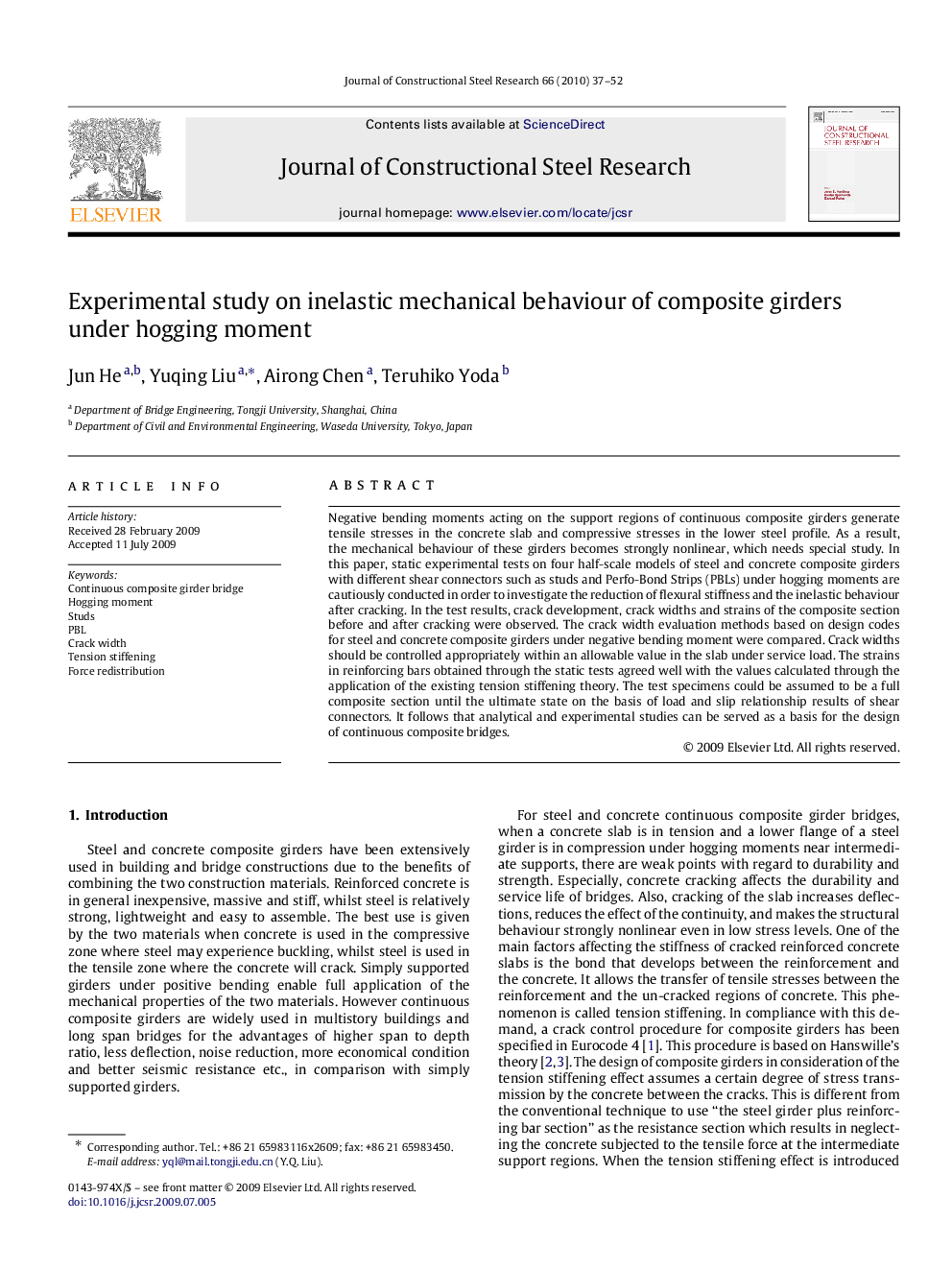| Article ID | Journal | Published Year | Pages | File Type |
|---|---|---|---|---|
| 285818 | Journal of Constructional Steel Research | 2010 | 16 Pages |
Negative bending moments acting on the support regions of continuous composite girders generate tensile stresses in the concrete slab and compressive stresses in the lower steel profile. As a result, the mechanical behaviour of these girders becomes strongly nonlinear, which needs special study. In this paper, static experimental tests on four half-scale models of steel and concrete composite girders with different shear connectors such as studs and Perfo-Bond Strips (PBLs) under hogging moments are cautiously conducted in order to investigate the reduction of flexural stiffness and the inelastic behaviour after cracking. In the test results, crack development, crack widths and strains of the composite section before and after cracking were observed. The crack width evaluation methods based on design codes for steel and concrete composite girders under negative bending moment were compared. Crack widths should be controlled appropriately within an allowable value in the slab under service load. The strains in reinforcing bars obtained through the static tests agreed well with the values calculated through the application of the existing tension stiffening theory. The test specimens could be assumed to be a full composite section until the ultimate state on the basis of load and slip relationship results of shear connectors. It follows that analytical and experimental studies can be served as a basis for the design of continuous composite bridges.
